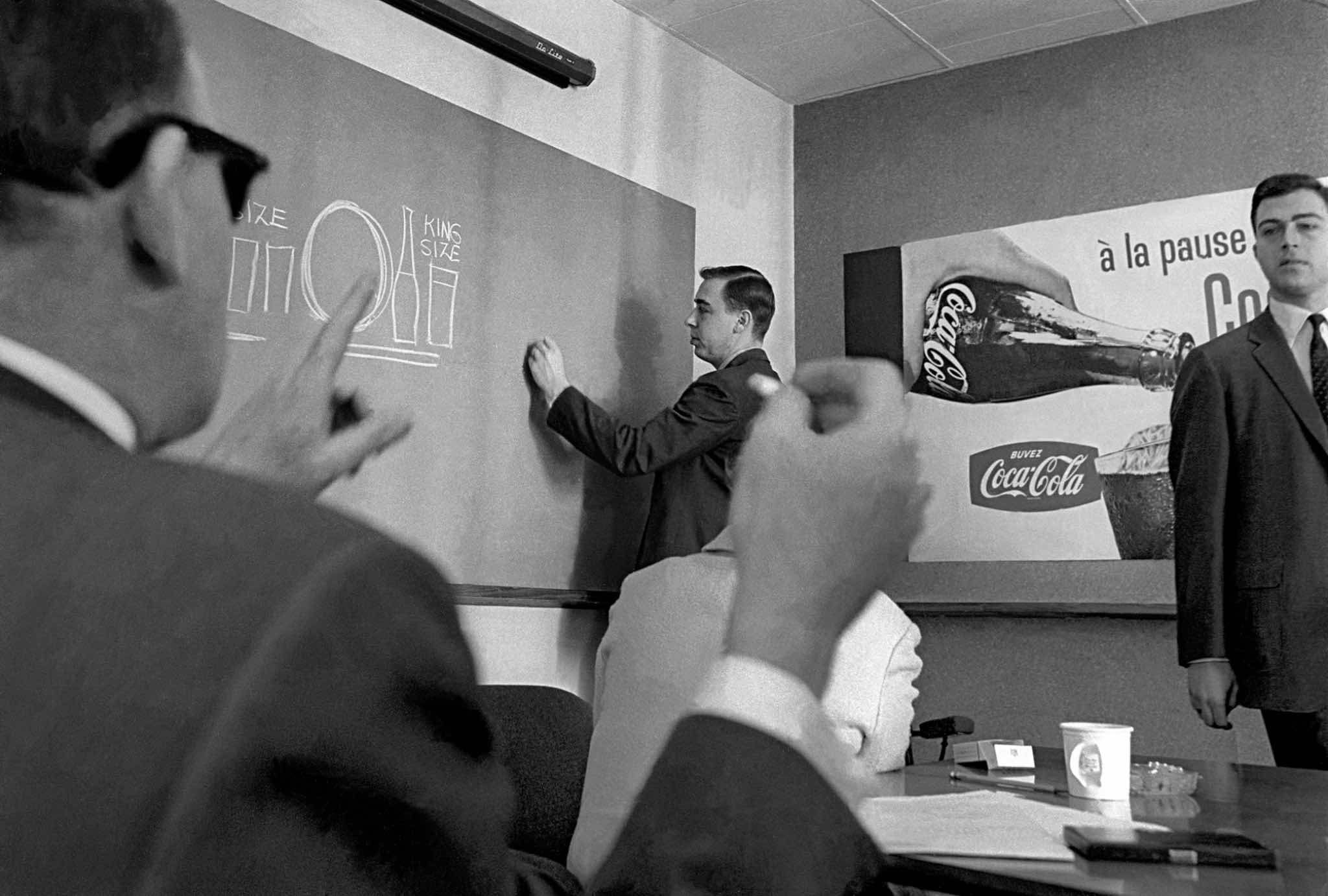HORVATLAND - THE '60s - PHOTOJOURNALISM - WORLD TRIP - NEW YORKGO TO HOME
1963, from Time machine
I attended a session of the committee updating Coca-Cola’s International Pattern Book. This is the ‘bible’ which McCann-Erickson, one of the major agencies of Madison Avenue, sends to all Coca-Cola’s concessionaries, to suggest strategies to follow in their respective areas, while adapting them to local mentalities (as in the case of some countries of East Asia, where red is associated with mourning and the famous logo had to be changed to blue).To begin with, the committee examines the reports from its foreign representatives and integrates them into its planetary policy. Then, its art directors call in a host of illustrators, photographers and filmmakers to produce ‘visuals’, which the committee examines and selects, before submitting them to the top instance, the board of directors of Coca-Cola Inc. But first, each project has to be tested, by a process invented by McCann’s psychologists and applied to people with different ethnic and sociological profiles, in a proportion supposedly similar to that of the ‘target consumer’. These ‘targets’ are asked to look at each ad for a given number of seconds, while an instrument measures the opening of their iris, which is presumed to indicate the degree of their interest. The figures are recorded and compared, allowing the agency to assign a coefficient of effectiveness to each ad and to predict its profitability. The Pattern Book will be the outcome of this research. It will be printed in full color and sent to all the concessionaries. But not a single one of these projects will actually be used: Coca-Cola wants them to be reinterpreted by local artists and adapted to local conditions. The meeting I was allowed to photograph was crucial: for the year to come, the management had decided to base all its advertising on still lives, showing Coke as a table drink, among other appealing foods. But this raised some fundamental questions: can meat be shown in India? Are spaghettis popular in Scandinavia? What types of bread and cheese are appropriate for Belgium? The only project on which all the members of the board could agree was one which did not show any food at all, only a gigantic blow-up of the famous liquid spilling out of a bottle and sparkling as it was arrested in mid-flow by the flash. The twelve deciders, seated in the first row around the oval table, were unanimously impressed. But a discordant voice piped up from behind. ‘It’s excellent’ said a young man who had got up from his back chair to address the gathering, ‘but you might think the Coke is being poured into the gutter.’ His intervention was met with silence. Finally the Vice-President of McCann-Erickson, who was chairing the meeting, answered with a counter-question. ‘Is your objection founded on research or are you expressing a personal hypothesis?’.


1963, New York, USA, meeting for Coca-Cola, at the Mc Cann-Erickson Agency (b)

1963, New York, USA, meeting for Coca-Cola, at the Mc Cann-Erickson Agency (b)

